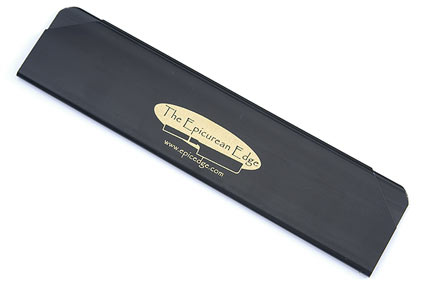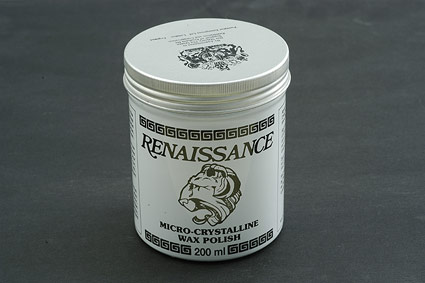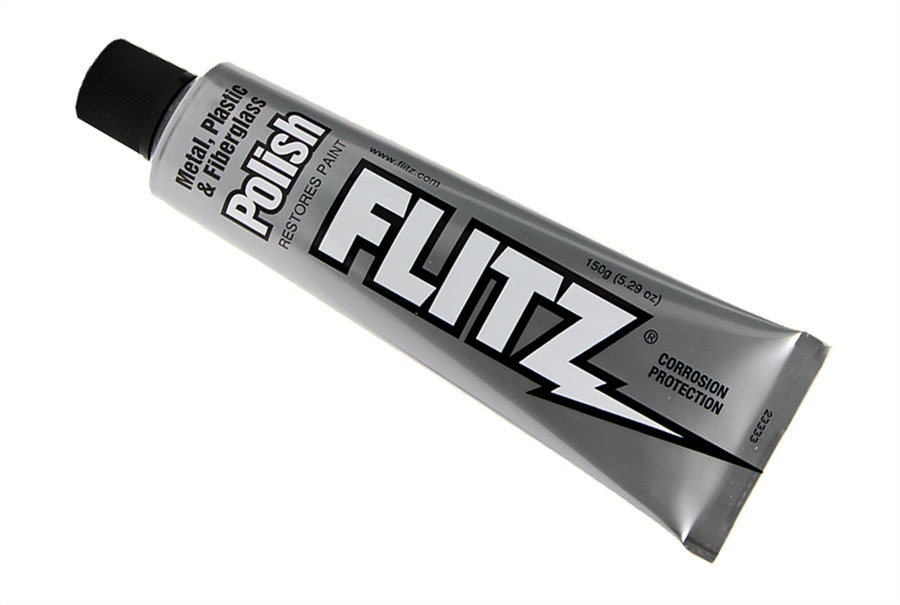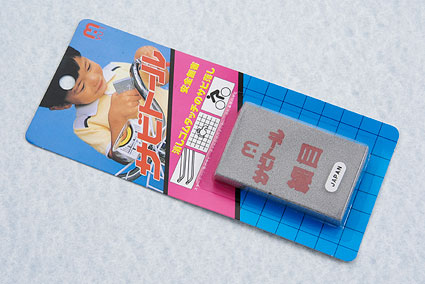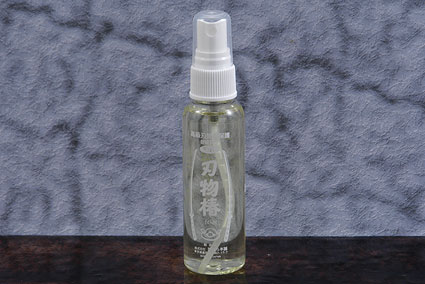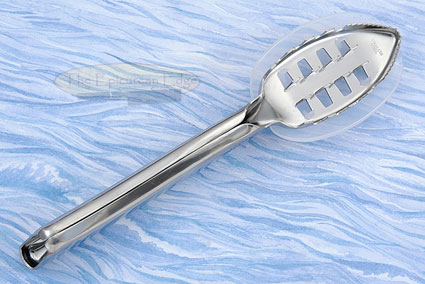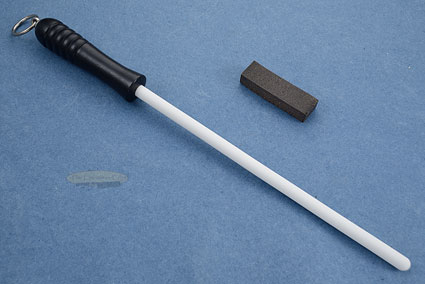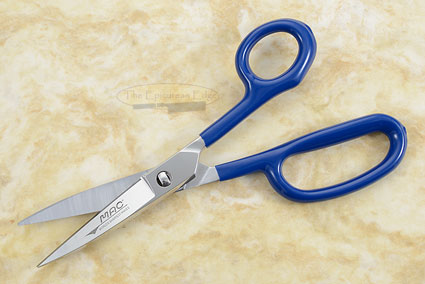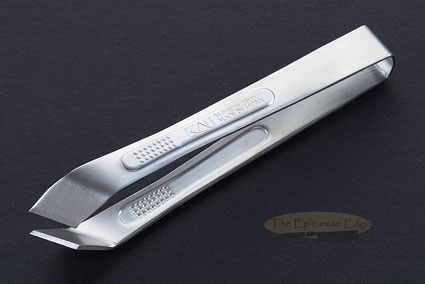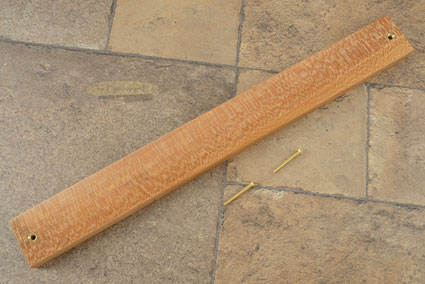How to Choose a Quality Kitchen Knife
A knife is the most important and most often used utensil in the kitchen. The first question in choosing a knife is "Which knives should I buy?"
With the many brands and styles of knives out there, purchasing knives is not a small decision. The knives you choose should last a lifetime (and maybe even be passed on to the next generation!). Once you own a quality set of knives, the only time you will have to buy another set is to give them as a gift. Speaking of which, knives are among the most popular wedding gifts!
When you are ready to buy knives, remember that they should not be considered a disposible object. Instead, a good set of knives will easily last you a lifetime.
Open Stock or Sets?
Knives can be purchased wither individually or as a set. Purchasing knives as a set usually provides a discount from buying the individual knives. The danger of buying sets is that you may find that you have purchased knives that you would not otherwise use. We generally recommend buying sets only if the knives in the set are very close to the knives you would purchase individually as open stock knives.
Most major cutlery manufacturers, sell knives in "open stock" as well as sets, which means you can buy one knife at a time. Buying knives in "open stock" usually makes sense if:
- Sets are not available from the manufacturer you are interested in. Many of the better manufacturers do not offer knife sets.
- You want a selection of knives that more closely fits the ones you use on a regular basis.
- You want to add a knife to your collection. Two people may frequently prepare meals together and find it easier to have two paring, utility or chef's knives.
- You are replacing a lost or stolen knife.
- You want a particular knife. For example, a person with small hands may prefer a smaller chef's knife than the one provided in the set. Or, your cooking style may frequently call for a specialty knife, such as a cleaver or a fillet knife.
- You want to buy top quality knives but can't afford the full set in a single purchase.
- You want to purchase knives from several different manufacturers. Some manufacturers do some knives really well, while other knives in the line may not be as well designed. Purchasing individual knives allows you to mix and match. You also may want to purchase from different manufacturers if you want to purchase the best primary knives you can afford (chef's knife, paring knife, slicer), but wish to purchase more affordable secondary knives (boning knife, bread knife, fillet knife, etc).
Fine Edge or "Never Needs Sharpening"
Most cutlery fall into one of these two categories.
- Fine edge knives are the classics of cutlery. They are the choice of chefs and accomplished cooks because the blade is much sharper which allows for finer, more precise cuts. However, fine edge knives do require some maintenance, such as honing with a steel or ceramic honing rod. Fine edge knives will make the cleanest cuts and these cleaner cuts will actually result in better tasting food.
- "Never Needs Sharpening" knives are a poor choice (and are not offered at Epicurean Edge). The blades are not able to make as precise of a cut as fine edge knives and generally these knives rely on a serrated sawing action rather than a razor cut. Generally, "Never Needs Sharpening" knives wear out in a few years and must be replaced rather than sharpened -- in the long run this means more expense rather than a savings.
Marks of a Quality Knife
At first glance it may seem difficult to distinguish a high-quality kitchen knife from an inferior one because often the important factors show up only in daily use. You can be sure of the fact that we at Epicurean Edge have sought out some of the best knives found anywhere.
When choosing your new knives, look for:
- The Blade
- The material used in the blade is one of the most important considerations in buying a knife. Blades will generally be made from either ceramic or metal. In general, a higher quality knife should have a blade that is relatively easily sharpened and stays sharp for a very long time.
- Stainless steel knives are manufactured from a high carbon steel that resists rust, stains and corrosion. Note that even stainless knives can rust or oxidize if mistreated. High carbon stainless steel knives combine exceptional edge holding with ease of care. Our shop's favorite high performance stainless steel knives include: Blazen, RyuSen, and Sakon. A great less expensive stainless steel knife is MAC.
- Carbon steel knives are manufactured from high carbon steel that only has limited amounts of chromium. In gereral, carbon steel knives can be sharper than stainless steel knives and are easier to re-sharpen. Many professional chefs prefer carbon steel knives because of the exceptional performance. Because carbon steel knives can easily rust or oxidize they are not for everyone. Carbon steel knives must be carefully maintained. They should be rinsed and dried after use. During cooking, it is a good idea to rinse a carbon steel knife off after cutting exceptionally acidic foods such as onions, citrus, and tomatoes. We recommend using camelia oil to help protect the knife from rust. Our shop's favorite high performance carbon steel knives include: Kumagoro and Kobayashi. A great, less expensive carbon steel knife is Kobayashi's Dojo Line. These have the advantage of stainless steel sides with a carbon steel core, and so are easier to care for. Even though Sabatier's carbon steel line is no longer brought over to the US by a major importer, we import these tremendous classic carbon steel European chef's knives that have been a long time favorite.
- Ceramic knives are slightly more fragile than steel knives, but provide an exceptional, long lasting edge that does not need regular maintenance. We sell Kyocera ceramic knives, which are currently the best ceramic knives that are made. Kyocera has a complimentary sharpening service because they realize that ceramic blades are beyond the ability of most local sharpeners.
- The tang is the portion of metal that continues through the handle and to which the handle is attached. Though many people think a full tang is a sign of a quality knife, this is simply not so. There are many examples of high quality knives that have full tangs, but equally so, some of the best knives do not have a tang that is visible from the outside of the handle.
- Top quality knives feel good in the cook's hand. The appeal is somewhat subjective, with different handle styles being prefered by different cooks. Balance does not mean the blade and the handle weigh the same. It means your knife feels so comfortable that becomes an extension of your hand. Some general rules are:
- The knife should feel solid and easy to handle.
- Chef's knives should have enough clearance to allow a full rocking, chopping motion over a cutting surface without smashing your fingers between the knife handle and the cutting board.
- A knife should be light but not flimsy. Though a heavy knife can feel comfortable, heavy knives add to hand fatigue and get stuck cutting firmer foods. A thinner knife with a distal taper will be a much better performer.
- The best chef's knives are distal tapered. This means that the knife progressively gets thinner from the center of the knife to the point. To get optimal balance, the tang (the metal part of the knife inside the handle) will also be tapered.
- Forging is the process of heating a single piece of metal and then hammering it into the shape of a blade. This usually involves high heat and tons of pressure. Stamped blades, on the other hand, are pressed out of solid sheet of metal. Though some of the best knives are forged, there are many exceptional knives that are stamped. Whether a knife is stamped or forged, a good quality knife will feel like an extension of the hand, whereas a poor quality knife will feel uncomfortable to hold.
- The parts of the knife shoudl be assembled without gaps. This is particularly important for hygienic reasons and for future sharpening. Neither the blade nor the handle should have any irregularities or burrs.
- The blade should be precision ground - a sure sign of high-quality workmanship.



